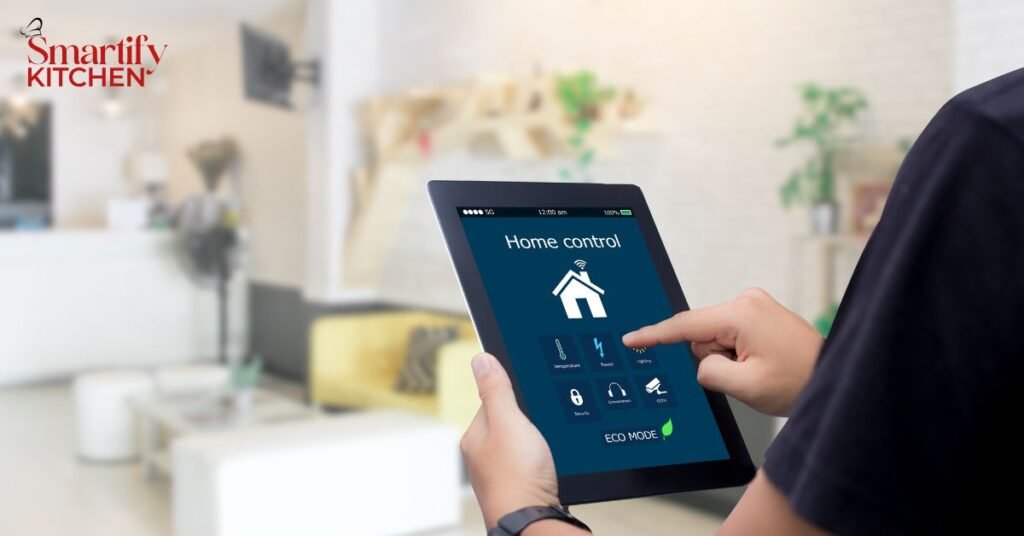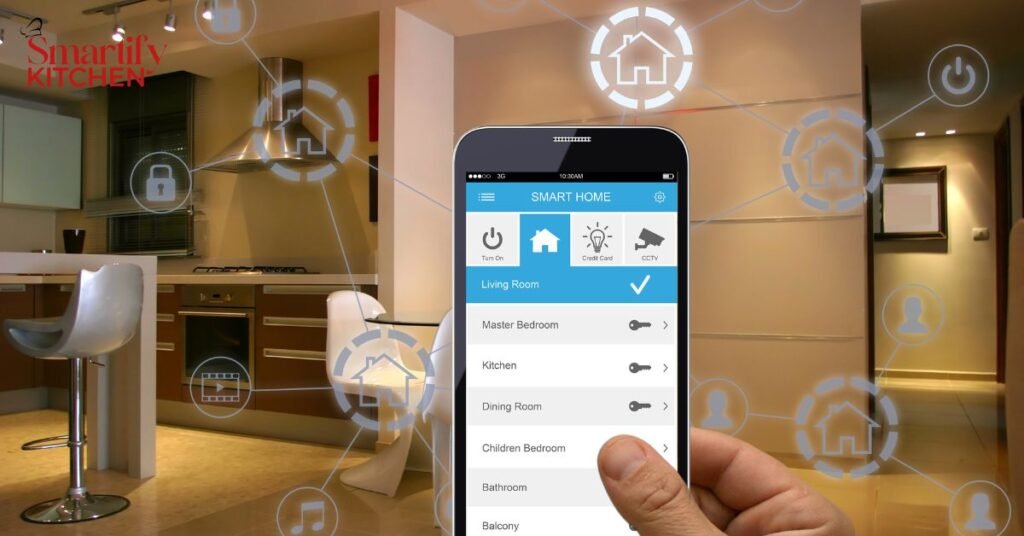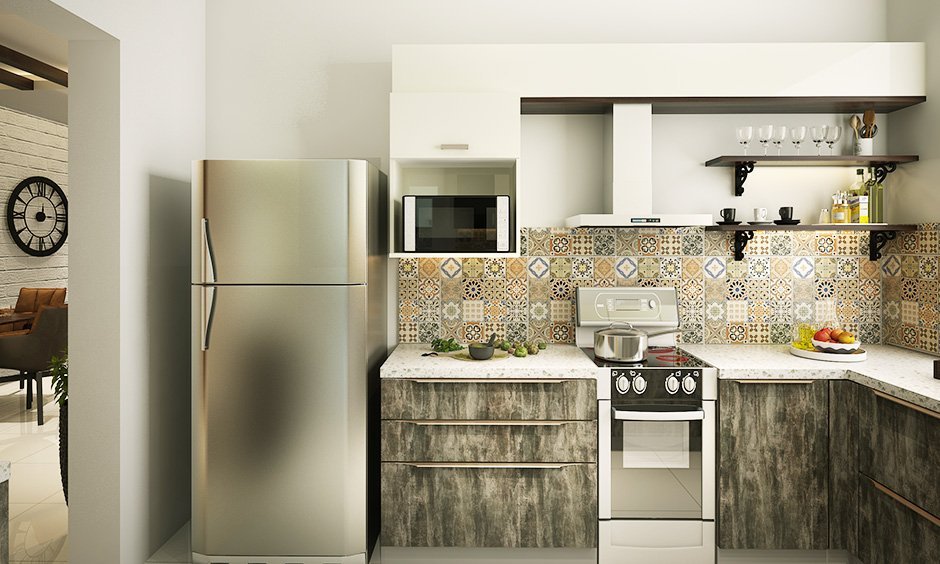Smart Home Lighting Solutions (Beginners Guide)

Lighting is a fundamental aspect of home design, significantly impacting both the aesthetics and functionality of living spaces. With the rise of smart technology, lighting has undergone a transformation, offering unprecedented control, customization, and energy efficiency.
This comprehensive guide delves into the world of smart home lighting solutions, exploring their various types, key features, and numerous benefits while providing practical advice on how to choose and install the right system for your home.
Smart Home Lighting

What is Smart Home Lighting?
Smart home lighting refers to a network of interconnected lighting devices that can be controlled remotely via smartphones, voice commands, or automated schedules. These systems offer features such as adjustable brightness, color, and temperature, as well as energy monitoring and integration with other smart home devices.
Evolution of Home Lighting Technology
Home lighting has evolved from simple incandescent bulbs to sophisticated LED systems with smart capabilities.
Key milestones include the introduction of compact fluorescent lamps (CFLs), the widespread adoption of LED technology, and the recent boom in smart lighting solutions driven by advancements in wireless communication and the Internet of Things (IoT).
Benefits of Smart Home Lighting
- Convenience and Control: Smart lighting allows users to control their lights from anywhere using a smartphone app or voice commands. This adds a level of convenience, especially when hands are occupied or when users are away from home.
- Energy Efficiency and Cost Savings: Smart lighting systems are designed to be energy-efficient, using LED bulbs and automated schedules to reduce electricity consumption and lower utility bills.
- Enhanced Security and Safety: Proper lighting enhances safety by providing better illumination for tasks and deterring potential intruders through automated lighting schedules and motion detection.
- Customization and Aesthetics: Smart lighting allows for a high degree of customization, enabling users to create the desired ambiance and highlight key features of their home.
Types of Smart Home Lighting Solutions
Let’s Explore some Types of Smart Home Lighting Solutions
Smart Bulbs
Smart bulbs are the most basic form of smart lighting, easily replacing traditional bulbs in existing fixtures. They offer features such as adjustable brightness and color, and are controlled via smartphone apps or voice commands.
Features and Capabilities: Smart bulbs provide flexible lighting solutions, allowing users to create different lighting scenes for various activities and moods. They are energy-efficient and have a long lifespan.
Popular Brands and Models: Philips Hue offers a wide range of smart bulbs with color-changing capabilities and integration with voice assistants. LIFX bulbs are known for their high brightness and wide color range. Sengled bulbs are more affordable and offer basic smart features.

Smart Light Strips
Smart light strips are flexible and can be placed in various locations to provide accent or task lighting. They are often used under cabinets, along countertops, or inside cabinets to enhance visibility and add a modern touch.
Versatility and Use Cases: Light strips can be cut to size and installed in various locations to highlight architectural features or provide additional task lighting. They can also be used to create a decorative effect by outlining countertops or islands.
Best Locations for Installation: Under-cabinet lighting improves visibility on countertops, making it easier to prepare food and perform other tasks. Light strips can also be installed inside cabinets to make it easier to find items. Additionally, they can be used as accent lighting to create a modern and stylish look.
Smart Switches and Dimmers
Smart switches and dimmers provide a more integrated solution for controlling existing light fixtures. They replace traditional switches and allow for remote control, scheduling, and automation.
Functionality and Advantages: Smart switches and dimmers enable users to control multiple lights with a single device, making them ideal for centralizing control in larger rooms or throughout the home.
Integration with Existing Fixtures: Smart switches and dimmers work with existing light fixtures, making them a cost-effective solution for upgrading to smart lighting without replacing all bulbs.
Smart Plugs and Sockets
Smart plugs and sockets can turn any lamp or light fixture into a smart device by allowing users to control the power supply remotely.

Use Cases for Lighting: Smart plugs can be used to control table lamps, floor lamps, or holiday lights, providing an easy way to add smart functionality to non-smart fixtures.
Benefits and Considerations: Smart plugs are affordable and easy to install, making them a great entry point for smart home beginners. However, they do not offer the same level of control as smart bulbs or switches.
Integrated Smart Lighting Systems
Integrated smart lighting systems offer comprehensive solutions for whole-home lighting control. These systems often include a mix of smart bulbs, light strips, switches, and other devices, all controlled through a central hub or app.
Whole-Home Solutions: Integrated systems provide seamless control of all lighting in the home, allowing for synchronized lighting scenes, automated schedules, and integration with other smart home devices.
Leading Brands and Products: Philips Hue, Lutron Caseta, and SmartThings offer comprehensive smart lighting systems with a wide range of compatible devices and features.
Key Features to Look for in Smart Lighting Systems
Let’s Explore some Key Features to Look for in Smart Lighting Systems.
Voice Control
Voice control is a major advantage of smart lighting systems, allowing users to control their lights hands-free using voice assistants like Alexa, Google Assistant, or Siri.
Compatibility with Voice Assistants: Smart lights can be linked to voice assistants, enabling commands such as “Turn on the kitchen lights” or “Dim the lights to 50%.” This adds a level of convenience, especially when your hands are occupied.
Examples of Voice Commands and Their Benefits: Voice commands can be used to adjust lighting while cooking, ensuring hands are free for other tasks. For example, “Set kitchen lights to cooking mode” can change the lighting to a brighter setting, while “Set kitchen lights to dinner mode” can create a softer, more intimate ambiance.
Remote Control via Apps
Smart lighting systems come with dedicated apps that allow users to control their lights remotely, even when they are not at home.
Setting Schedules and Timers: Users can set schedules for their lights to turn on and off at specific times, ensuring energy efficiency and added security. For example, lights can be set to turn on automatically in the morning and turn off at bedtime.
Adjusting Brightness and Color Remotely: The ability to control lighting remotely adds convenience, especially when users want to adjust lighting based on changing conditions or moods. For example, you can turn on the lights before you arrive home or adjust the brightness for a movie night without leaving your seat.
Automation and Scheduling
Automation features allow users to create routines and schedules for their lights, enhancing convenience and energy efficiency.
Creating Routines for Different Times of the Day: Morning routines might involve bright, energizing light, while evening routines could feature softer, warmer lighting. Automation can help create a more natural and comfortable lighting environment.
Energy-Saving Benefits of Automation: Automated schedules ensure lights are not left on unnecessarily, reducing energy consumption and costs. For example, lights can be set to turn off automatically when no motion is detected for a certain period.

Integration with Other Smart Home Devices
Smart lighting systems can be integrated with other smart home devices for a cohesive and automated home environment.
Syncing with Smart Thermostats, Sensors, and Security Systems: Lights can be programmed to work in conjunction with other devices, such as turning on when motion is detected or adjusting based on ambient light conditions. This enhances the overall functionality and efficiency of smart home systems.
Benefits of a Fully Integrated Smart Home Ecosystem: Integration enhances the overall functionality and efficiency of smart home systems, creating a seamless user experience. For example, lights can be set to turn on automatically when you arrive home or adjust based on the time of day.
Energy Monitoring and Reporting
Many smart lighting systems offer energy monitoring features that allow users to track their electricity usage and optimize energy efficiency.
Tracking Usage and Optimizing Efficiency: Energy monitoring helps users understand their lighting usage patterns and identify areas for improvement. This can lead to significant cost savings and reduced environmental impact.
Long-Term Cost Savings: By optimizing energy efficiency, smart lighting systems can help reduce electricity bills over time. This makes them a cost-effective investment for homeowners looking to save money on utilities.
Planning and Designing Your Smart Home Lighting
Let’s Review some Planning and Design Tips for Your Smart Home Lighting.
Assessing Your Needs and Goals
Before choosing a smart lighting solution, it’s important to assess the specific needs of your home based on its size, layout, and functionality.
Identifying Key Areas and Requirements: Larger homes may require more lighting sources, while smaller spaces might benefit from focused task lighting. Consider the overall layout and how different types of lighting can be used to achieve optimal illumination.
Setting Priorities and Budgets: Determine your primary goals for smart lighting, whether it’s enhancing convenience, improving energy efficiency, or adding aesthetic appeal. Set a budget that aligns with these priorities.

Choosing the Right Products and Brands
Selecting the right smart lighting products and brands is crucial for achieving the desired results.
Research and Reviews: Read reviews and do thorough research to find reliable and high-quality products. Consider factors such as ease of installation, compatibility, and user satisfaction.
Compatibility and Ecosystem Considerations: Ensure that the smart lighting products you choose are compatible with your existing smart home devices and systems. This will help create a seamless and integrated smart home ecosystem.
Designing Effective Lighting Layouts
An effective lighting layout is key to achieving the desired ambiance and functionality in your home.
Layered Lighting Approach (Ambient, Task, Accent): Use a combination of ambient, task, and accent lighting to create a balanced and versatile lighting scheme. Ambient lighting provides general illumination, task lighting focuses on specific areas, and accent lighting highlights architectural features and décor.
Room-by-Room Considerations: Tailor the lighting layout to the specific needs of each room. For example, the kitchen may require bright task lighting, while the living room might benefit from softer, ambient lighting.
Installation Tips and Best Practices
Proper installation is crucial for the optimal performance of smart lighting systems.
DIY vs. Professional Installation: Assess your comfort level with installation tasks and decide whether to hire a professional or do it yourself. Many smart lighting systems are designed for easy DIY installation, but more complex setups may require professional assistance.
Common Challenges and Solutions: Follow installation guidelines carefully to avoid common mistakes, such as incorrect placement or improper connections. Ensure proper wiring and avoid overloading circuits to prevent issues.
Also Read: Smart Kitchen Hacks for Busy Families (2024)
Advanced Smart Lighting Features and Innovations
Let’s Explore Advanced Smart Lighting Features and Innovations.
Adaptive and Circadian Lighting
Adaptive lighting adjusts the color and brightness of lights based on the time of day, mimicking natural sunlight patterns.
Benefits for Health and Well-being: Circadian lighting can improve sleep quality, mood, and overall well-being by supporting the body’s natural rhythms.
How It Works: These systems use sensors and algorithms to adjust lighting in real-time, creating a more natural and comfortable environment.
Color Tuning and RGB Lighting
Color tuning allows users to adjust the color temperature of their lights, while RGB lighting offers a full spectrum of colors for creative lighting effects.
Creating Ambiance and Mood: Use color tuning to create different atmospheres for various activities and times of day. RGB lighting can be used for decorative purposes, adding a vibrant and dynamic element to your home.
Best Uses for Different Spaces: Warmer tones can create a cozy and inviting atmosphere in living rooms and bedrooms, while cooler tones are ideal for task-oriented spaces like kitchens and offices.
Integration with Home Automation Systems
Smart lighting can be integrated with broader home automation systems for a comprehensive smart home experience.
Smart Hubs and Controllers: Use smart hubs and controllers to centralize control of your lighting and other smart devices. This allows for more seamless and automated interactions.
Creating Comprehensive Smart Home Ecosystems: Integration enhances the overall functionality and efficiency of smart home systems, creating a seamless user experience. For example, lights can be set to turn on automatically when you arrive home or adjust based on the time of day.
Future Trends in Smart Lighting
The future of smart lighting is full of exciting possibilities, driven by advancements in technology and changing consumer needs.
Emerging Technologies: Look out for innovations such as wireless power, more advanced sensors, and AI-driven lighting systems.
Predictions for the Next Decade: As technology continues to evolve, smart lighting systems will become even more integrated, intuitive, and energy-efficient, offering greater benefits to homeowners.
Real-Life Applications and Case Studies
Let’s Review some Real-Life Applications and Case Studies.
Residential Smart Lighting Examples
Real-life examples can provide valuable insights into the benefits and challenges of smart lighting.
Urban Apartments: Smart lighting can enhance the functionality and aesthetics of small urban apartments, offering flexible lighting solutions for different activities and moods.
Suburban Homes: Larger homes can benefit from comprehensive smart lighting systems that provide centralized control and automation.
Rural Properties: Smart lighting can improve security and convenience in rural properties, where traditional lighting solutions may be less effective.
Commercial and Public Space Applications
Smart lighting is not limited to residential settings and can be applied to various commercial and public spaces.
Offices and Workspaces: Smart lighting can improve productivity and well-being in office environments by providing adaptable and customizable lighting solutions.
Retail and Hospitality: Enhance customer experiences in retail and hospitality settings with smart lighting that creates inviting and dynamic atmospheres.
Outdoor and Landscape Lighting: Smart lighting can improve the safety and aesthetics of outdoor spaces, providing automated and energy-efficient solutions for landscape lighting.

Lessons Learned from Early Adopters
Learning from the experiences of early adopters can help new users avoid common pitfalls and make informed decisions.
Success Stories: Highlight examples of successful smart lighting implementations and the benefits they provide.
Common Pitfalls and How to Avoid Them: Share tips and best practices to help new users overcome challenges and maximize the benefits of smart lighting.
Conclusion
Smart home lighting offers numerous benefits, including improved convenience, energy efficiency, safety, and aesthetic appeal.
By understanding the different types of smart lighting, key features, and how to choose the right solution, homeowners can enhance their living spaces significantly.
Investing in smart home lighting is a step towards a more modern, efficient, and enjoyable home environment. The ability to customize and control lighting settings adds a new level of convenience and functionality to any living space.
As technology continues to advance, the future of smart home lighting looks bright. Homeowners can look forward to even more innovative and integrated lighting solutions that enhance their quality of life.






